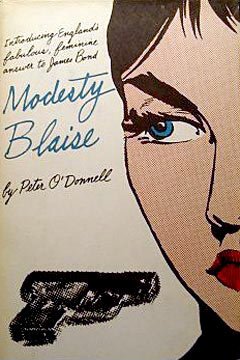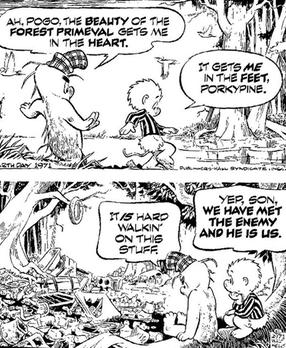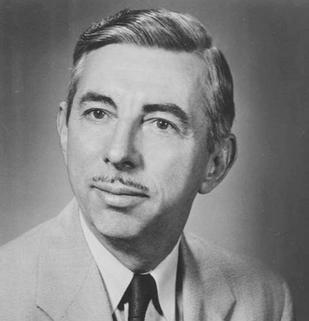The Daily Planet is a fictional newspaper appearing in American comic books published by DC Comics, commonly in association with Superman. The newspaper was first mentioned in Action Comics #23. The Daily Planet building's distinguishing feature is the enormous globe that sits on top of the building.

Dennis the Menace is a daily syndicated newspaper comic strip originally created, written, and illustrated by Hank Ketcham. The comic strip made its debut on March 12, 1951, in 16 newspapers and was originally distributed by Post-Hall Syndicate. It is now written and drawn by Ketcham's former assistants, Marcus Hamilton, Ron Ferdinand, and son Scott Ketcham, and distributed to at least 1,000 newspapers in 48 countries and in 19 languages by King Features Syndicate. The comic strip usually runs for a single panel on weekdays and a full strip on Sundays.

The Silver Age of Comic Books was a period of artistic advancement and widespread commercial success in mainstream American comic books, predominantly those featuring the superhero archetype. Following the Golden Age of Comic Books, the Silver Age is considered to cover the period from 1956 to 1970, and was succeeded by the Bronze Age.

Little Orphan Annie was a daily American comic strip created by Harold Gray and syndicated by the Tribune Media Services. The strip took its name from the 1885 poem "Little Orphant Annie" by James Whitcomb Riley, and it made its debut on August 5, 1924, in the New York Daily News.

Gasoline Alley is a comic strip created by Frank King and distributed by Tribune Content Agency. It centers on the lives of patriarch Walt Wallet, his family, and residents in the town of Gasoline Alley, with storylines reflecting traditional American values.
Disney comics are comic books and comic strips featuring characters created by the Walt Disney Company, including Mickey Mouse, Donald Duck and Uncle Scrooge.

Modesty Blaise is a British comic strip featuring a fictional character of the same name, created by author Peter O'Donnell and illustrator Jim Holdaway in 1963. The strip follows Modesty Blaise, an exceptional young woman with many talents and a criminal past, and her trusty sidekick Willie Garvin. It was adapted into films in 1966, 1982, and 2003, and from 1965 onwards, 11 novels and two short-story collections were written.

Pogo was a daily comic strip that was created by cartoonist Walt Kelly and syndicated to American newspapers from 1948 until 1975. Set in the Okefenokee Swamp in the Southeastern United States, Pogo followed the adventures of its anthropomorphic animal characters, including the title character, an opossum. The strip was written for both children and adults, with layers of social and political satire targeted to the latter. Pogo was distributed by the Post-Hall Syndicate. The strip earned Kelly a Reuben Award in 1951.

Bryan Talbot is a British comics artist and writer, best known as the creator of The Adventures of Luther Arkwright and its sequel Heart of Empire, as well as the Grandville series of books. He collaborated with his wife, Mary M. Talbot to produce Dotter of Her Father's Eyes, which won the 2012 Costa biography award.
A British comic is a periodical published in the United Kingdom that contains comic strips. It is generally referred to as a comic or a comic magazine, and historically as a comic paper.

Lucille "Lucy" Van Pelt is a fictional character in the syndicated comic strip Peanuts, written and drawn by Charles Schulz. She is the older sister of Linus and Rerun. Lucy is characterized as a "fussbudget", crabby, bossy and opinionated girl who bullies most other characters in the strip, particularly Linus and Charlie Brown.

Alan Aldridge was a British artist, graphic designer and illustrator. He is best known for his psychedelic artwork made for books and record covers by The Beatles and The Who.

Secret Agent X-9 is a comic strip created by writer Dashiell Hammett and artist Alex Raymond. Syndicated by King Features, it ran from January 22, 1934 until February 10, 1996.

George Tuska, who early in his career used a variety of pen names including Carl Larson, was an American comic book and newspaper comic strip artist best known for his 1940s work on various Captain Marvel titles and the crime fiction series Crime Does Not Pay and for his 1960s work illustrating Iron Man and other Marvel Comics characters. He also drew the DC Comics newspaper comic strip The World's Greatest Superheroes from 1978–1982.

Brick Bradford is a science fiction comic strip created by writer William Ritt, a journalist based in Cleveland, and artist Clarence Gray. It was first distributed on August 21, 1933 by Central Press Association, a subsidiary of King Features Syndicate which specialized in producing material for small-town newspapers. The strip ended in 1987.

Al Smith was an American cartoonist whose work included a long run on the comic strip Mutt and Jeff. Comics historian R. C. Harvey postulates that Smith's nearly 50-year run on the strip was, at the time of Smith's retirement, a world record for longevity. Smith also ran a comic strip syndication service — mainly serving weekly newspapers — from the 1950s until the late 1990s.
Wee Pals is an American syndicated comic strip about a diverse group of children, created and produced by Morrie Turner. It was the first comic strip syndicated in the United States to have a cast of diverse ethnicity, dubbed the "Rainbow Gang".
Notable events of 1967 in comics. See also List of years in comics.
The history of comics has followed different paths in different parts of the world. It can be traced back to early precursors such as Trajan's Column, in Rome, Egyptian hieroglyphs and the Bayeux Tapestry.












